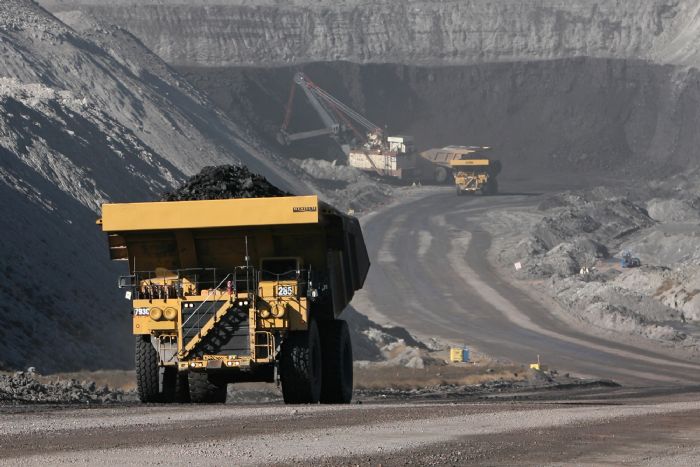
Tar sands and the myth of tidewater access
If you are paying attention to the tar sands pipeline conversations, you have no doubt heard industry proponents argue that Alberta needs another pipeline to get its oil to tidewater (i.e. the east or west coast of Canada in this case) in order to obtain the highest price possible for the product.
But the fact is: producers are already getting the highest possible price.
The assertion that the Canadian or Albertan economy would be in better shape today if a pipeline to tidewater were in place is comprehensively debunked in a paper we release today together with our colleagues at NRDC and Environmental Defence.
In this new analysis, we make the clear case that increased access to tidewater would not improve the economics of today’s tar sands production. New pipelines will only serve future expansion of high risk tar sands, and deepen the dependency of the Albertan economy on a boom and bust cycle. This is the same cycle that is wreaking havoc on tens of thousands of livelihoods across the country as we speak.
For context, Canadian tar sands crude (through a benchmark known as Western Canadian Select or WCS) trades at a discount to conventional crude oil benchmarks (such as West Texas Intermediate (WTI) or Brent). The main reasons for this are: a) quality; tar sands crude is a heavy sour low quality crude that is more difficult to refine than light crude, and b) geography; Alberta is simply a long way from major markets for heavy crude oil and as a result transportation costs are priced into the benchmark.
At certain times in the past there has been a third factor affecting the discount: supply and demand. When the supply of tar sands crude exceeds either available pipeline capacity or the ability of refineries at the terminus of those pipelines to process it, the price of tar sands crude goes down further relative to other crudes in the market.
Our briefing primarily examines changes in the supply and demand factor when it comes to tar sands markets and points to three key reasons why the differential (aka price discount) associated with this factor has dissolved in recent years. The bottom line is that tar sands producers are currently getting the best price possible for their product and the so-called tidewater argument – which may once have had some truth to it – has run out of steam.
Ample pipeline capacity: The tar sands sector currently has ample pipeline capacity to get its product to the largest heavy oil refineries in the world. If a new pipeline to the east or west coast did exist, the value of WCS would not be any higher.
This is because the completion of pipelines between Illinois, Cushing, and the Gulf Coast over the past two years has unlocked what used to be a regional transportation bottleneck that was causing an oversupply in the U.S. Midwest and forcing WCS producers to sell at a lower price (it is worth noting that this argument has its roots in the Keystone debate, during which time the aforementioned bottleneck was impacting price differentials – but that is no longer the case).
-
No promise in Europe or Asia: Crude sent to European or Asian markets would likely fetch lower prices for Canadian producers than they receive at U.S. refineries. The best price available for Canadian heavy crude is at the world’s largest heavy oil refining hubs in the U.S. Gulf Coast and the U.S. Midwest, which producers currently enjoy full access to.
The lifting of the crude export ban: In late 2015, the U.S. lifted its decades old ban on the export of domestically produced oil. The effects of the ban were complex, but in general it reduced U.S. prices for light oil, as shale production expanded and had nowhere to go, creating a glut in Gulf Coast refineries. Whatever price distortion this asserted on light (synthetic and conventional) Canadian crudes is now gone.
In other words, a new pipeline to the east or west coast would not make an ounce of difference to Alberta’s current economic woes. The low global oil price is driving Alberta’s economic crisis – not the price differential, which has now been reduced to the static unavoidable difference based on the lower quality of tar sands compared to other crudes, and the relative distance of Alberta from major heavy oil markets.
If the province and the federal government really want a sustainable solution to the current conditions, they must match their climate leadership ambitions with good mid/long term economic policy making: economic and energy diversification. The world is moving away from fossil fuels, and while the oil price will surely rise again, it will surely crash again too. Furthermore, in a carbon-constrained world with shrinking demand, high cost production such as the tar sands is going to be inevitably edged out (leaving any major new investments stranded).
Alberta and Canada have enormous potential to redefine themselves as clean energy superpowers, particularly because they have the skilled labour force to make it happen. It is not going to be new pipelines that pay for that transformation, as the Prime Minister has suggested. Quite the opposite: new pipelines would only lock Canada into decades more unwanted pollution and economic turmoil.
The sooner Canada gets on with building the clean energy future we need, the sooner it can let go of the pipe dreams that threaten to take down both the climate and the economy. It’s time to get to work on the energy that will power this century and propel Canada to a stable and prosperous future.
Read the full briefing note here.
